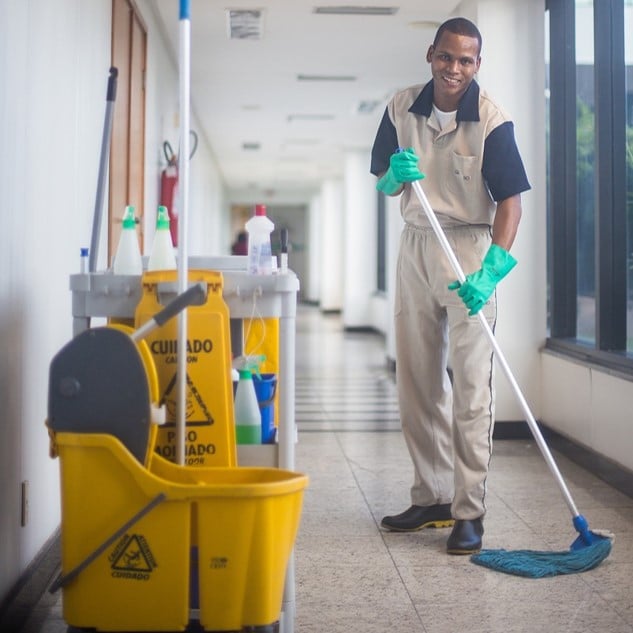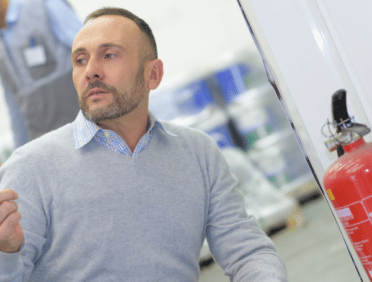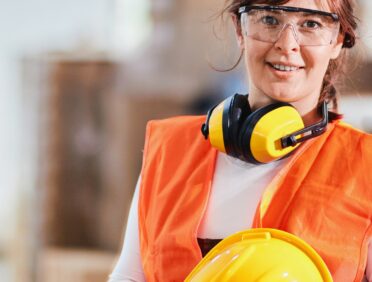The current state of UK’s Health and Safety
In this post, we will provide an in-depth examination of the current state of health and safety in the United Kingdom. We look at both accomplishments and obstacles, as well as the decreasing number of workplace accidents, the impact of regulatory compliance on worker well-being, and growing dangers and mental health concerns.
Furthermore, we will highlight worldwide parallels and future prospects for the UK’s health and safety, including developing trends, anticipated legislative changes, and stakeholders’ roles in building a safer future.
Decline in workplace accidents and fatalities
Over the years, the United Kingdom has achieved great success in lowering occupational accidents and fatalities. The frequency of occurrences has decreased significantly as a result of strict implementation of health and safety rules, increased awareness, and focused activities. This decrease shows the combined efforts of businesses, employees, and regulatory organisations to build safer workplaces and prioritise worker well-being.
Impact of regulatory compliance on worker well-being
The emphasis on regulatory compliance has improved worker well-being in a variety of areas in the United Kingdom. Companies are increasingly understanding the value of developing and adhering to health and safety regulations in order to protect their employees. Compliance with laws guarantees that thorough risk assessments, suitable training, and necessary safety measures are implemented.
Workers gain from decreased occupational dangers, improved working conditions, and greater physical and mental well-being as a result.
Innovations in Safety Equipment and Protective Gear
Constant innovation in workplace safety equipment and protective gear has played a critical role in protecting workers. This article examines improvements in safety technology, focusing on their significance in the United Kingdom. These developments have changed worker protection, lowering dangers and enhancing overall occupational safety. They range from improved personal protective equipment (PPE) to cutting-edge monitoring gadgets.
The UK continues to prioritise the well-being of its employees and reinforces its commitment to a safe working environment by remaining at the forefront of safety equipment advancements.
Digitalization and Automation in Health and Safety practises
The digital era has resulted in substantial breakthroughs in health and safety procedures across a wide range of industries in the United Kingdom. The purpose of this essay is to investigate the revolutionary impact of digitalization and automation on workplace safety and well-being. Smart sensors and wearable technology, as well as data analytics and virtual training, have changed risk assessment, monitoring, and compliance.
As the United Kingdom continues to embrace digitalization, leveraging the power of technology will become increasingly important for enhancing health and safety standards.
Ongoing Challenges and Areas of Improvement
In the United Kingdom, the quest to guarantee workplace safety and well-being is a continuing undertaking that encounters chronic obstacles and necessitates continual development. This essay focuses on two main areas: growing workplace dangers and addressing mental health and well-being.
As the workplace evolves, new risks emerge, demanding proactive actions to reduce risks connected to technology, cybersecurity, and emerging industries.
Emerging risks in the modern workplace
As the workplace landscape evolves, new risks and hazards emerge that require the attention of UK health and safety experts. Technology improvements provide new concerns, such as cybersecurity threats, ergonomic issues connected with continuous use of digital gadgets, and potential health dangers associated with developing industries such as nanotechnology.
Organisations and regulatory authorities must stay on top of new hazards and apply mitigation measures as soon as possible. To handle these developing threats, industry specialists, government organisations, and academia must constantly monitor, research, and collaborate.
Addressing mental health and well-being
Understanding the effect of mental health on overall well-being, the United Kingdom has placed a greater emphasis on addressing mental health issues in the workplace. Stress, anxiety, and depression are all common concerns that can have an impact on employee productivity, engagement, and safety. Companies are now encouraged to foster a friendly work environment that encourages mental health, gives access to counselling or support services, and implements preventive steps to reduce job-related stress.
Health and safety professionals are working with mental health experts to create standards and methods that prioritise employees’ psychological well-being. Nonetheless, continual efforts are required to dispel the stigma around mental health, raise awareness, and ensure enough resources are available for individuals in need.
International Comparisons and Best Practises
In order to improve health and safety standards, the United Kingdom goes beyond its boundaries to examine its performance and learn from other countries. We look at the significance of worldwide comparisons and best practises in the health and safety landscape of the United Kingdom. The UK receives vital insights into its success and identifies opportunities for improvement by measuring its performance against global norms.
In addition, analysing tactics used by other countries provides inspiration and inventive answers to particular difficulties. Through encouraging knowledge sharing, the UK can embrace best practises and put in place effective policies to make its workforce safer at work.
Benchmarking UK’s Health and Safety Performance
It is critical to compare the UK’s health and safety performance to worldwide norms in order to assess progress and identify areas for improvement. The UK can analyse its standing and gauge its efficacy in providing a safe working environment by analysing important data such as workplace accident rates, fatalities, and enforcement measures.
Furthermore, benchmarking allows the UK to learn from the experiences of other countries and implement best practises that have proven successful in lowering workplace risks and improving safety results. It presents a valuable chance for the UK to discover novel ideas, regulatory frameworks, and enforcement mechanisms that might further improve the nation’s health and safety procedures.
Learning from other countries’ approaches
Studying and learning from the approaches to health and safety of other countries can provide significant insights and inspiration for the UK. Various countries have distinct issues and have found novel strategies to handle them. The UK can explore alternative tactics, legal frameworks, and collaborative approaches that have generated beneficial results by analysing successful strategies and initiatives done abroad.
This sharing of information can help inform policy decisions, enforcement methods, and the creation of new standards or regulations. Learning from other countries’ techniques broadens one’s viewpoint and stimulates ongoing progress in the United Kingdom’s health and safety procedures, ultimately leading to safer workplaces for everybody.
Future Outlook of UK’s Health and Safety
The future of health and safety in the United Kingdom has enormous potential for improvement and progress. This article delves into the important parts of the future perspective, such as rising trends and technology, anticipated legislative changes and reforms, and stakeholders’ roles in defining the route forward. Innovative solutions are likely to transform safety standards, from the incorporation of artificial intelligence in risk assessment to wearable technology for health monitoring.
Furthermore, potential legislative changes as well as the impact of Brexit on health and safety laws must be carefully considered. Cooperation among the government, companies, employees, trade unions, and professional organisations will be critical to guaranteeing ongoing improvement and adaptation to changing difficulties.
Emerging Trends and Technologies
The UK should proactively adapt to the shifting landscape of health and safety by embracing emerging trends and technologies such as AI in risk assessment and wearable technology for health monitoring. These advancements provide new potential to more effectively identify and mitigate risks, thereby improving worker protection and well-being.
If the United Kingdom continues to investigate and incorporate new technologies, it may pave the way for a future in which health and safety procedures are more advanced, data-driven, and responsive to changing workplace concerns.
Artificial Intelligence in Risk Assessment
The incorporation of artificial intelligence (AI) in risk assessment is set to transform health and safety standards in the United Kingdom. Artificial intelligence-powered computers can analyse massive volumes of data, discover patterns, and predict possible threats more accurately and efficiently than ever before. AI systems can assess hazards in real-time by leveraging machine learning and data analytics, enabling preemptive interventions to avert accidents and injuries.
This technology has the potential to change the way risks are recognised, assessed, and managed in a variety of industries, improving overall safety standards and lowering workplace mishaps.
Wearable Technology for Health Monitoring
Wearable technology has the potential to significantly advance health monitoring techniques in the United Kingdom. Smartwatches, fitness trackers, and biosensors track vital signs, physical effort levels, and exposure to risks in real time. These wearable devices can provide significant data that can aid in the identification of potential health hazards, the detection of early indicators of exhaustion or stress, and the prompting of timely actions.
Wearable technology provides preventive actions to mitigate health-related risks, increase worker safety, and improve overall workplace health and productivity by continuously monitoring employees’ well-being in real-time. As wearable technology advances, its incorporation into health and safety standards has the potential to significantly improve workplace safety in the future.
Potential Legislative Changes and Reforms
The future of health and safety in the United Kingdom offers the promise of legislative improvements and reforms. This article delves into two major topics: the fictitious Health and Safety (Amendment) Act and the impact of Brexit on health and safety standards. If passed, the hypothetical act would address increasing concerns, increase enforcement, and embrace technological advances. Its goal is to improve worker well-being and provide a safer working environment. Furthermore, Brexit has necessitated a rethinking of previously governed legislation by EU directives.
The United Kingdom has a chance to adjust its health and safety system to national needs while preserving strong safeguards. In building the future regulatory landscape, striking a balance between flexibility and worker protection is critical.
The Health and Safety (Amendment) Act [hypothetical]
Looking ahead, the proposed Health and Safety (Amendment) Act might bring significant changes to the UK’s health and safety landscape. If passed, this legislation would strive to address new dangers, strengthen regulatory frameworks, and promote proactive steps to protect employees’ safety. It could include provisions for stronger enforcement, increased penalties for noncompliance, and enhanced duties for companies to protect their employees’ health and safety.
The imagined act would most likely include technological improvements such as instructions for the use of AI in risk assessment and data-driven techniques for preventive measures. As legislation changes, stakeholders must stay aware and actively participate in creating these reforms in order to foster a safer working environment.
Impact of Brexit on Health and Safety Regulations
The impact of Brexit on legislation also has an impact on the future prognosis for UK health and safety. Regulations and standards previously set by EU directives will be reassessed as the UK navigates its post-Brexit course. This provides an opportunity for the UK to adjust its health and safety system to unique national circumstances while still providing workers with a high degree of protection.
The UK may choose to change or replace existing legislation to ensure that it remains consistent with international best practises and retains employer and employee confidence. It is critical to create a balance between legislative flexibility and strong safeguards in order to foster a healthy relationship between business production and worker well-being.
The Role of Stakeholders in Shaping the Future
The future of health and safety in the UK is dependent on stakeholders working together. This essay examines the crucial role of collaboration among government, companies, employees, trade unions, and professional organisations in charting the future course. Stakeholders can achieve a harmonic balance between regulatory compliance, workplace well-being, and productivity by collaborating.
The government establishes the legal framework, while employers are responsible for creating safe work environments. Workers take an active role by following safety protocols and reporting dangers. Professional groups provide expertise and industry-specific counsel, while trade unions campaign for employees’ rights and ensure their views are heard.
Collaboration between Government, Employers, and Employees
The future of health and safety in the United Kingdom is dependent on the joint efforts of major stakeholders such as the government, companies, and employees. Good communication and cooperation between these stakeholders are critical for developing policies, enforcing rules, and fostering a safety culture in the workplace. The government is critical in establishing a favourable legislative environment, offering direction, and ensuring compliance.
Employers, on the other hand, must emphasise their employees’ well-being, implement preventive measures, and develop a positive safety culture. Workers should be empowered to participate in health and safety activities as active participants by reporting dangers, participating in training programmes, and following safety regulations. Stakeholders may work together to improve health and safety outcomes for everybody by building strong partnerships and collective accountability.
Engaging with Trade Unions and Professional Bodies
Trade unions and professional organisations play an important role in defining the future of health and safety in the United Kingdom. Trade unions fight for workers’ rights by making sure their voices are heard and their problems are addressed. They help to negotiate improved working conditions, promote training programmes, and actively participate in the formulation of health and safety policies. Professional organisations, such as those that represent health and safety experts, provide expertise, direction, and industry-specific insights.
They help to shape best practises, professional standards, and continual progress. Working with trade unions and professional organisations allows for a thorough awareness of the difficulties that employees experience as well as vital input into the development of effective policies and laws.
Where can I Find Quality Health and Safety Training?
Here at Learn Q we have a number of training programmes designed to help you keep your self, your colleagues, your customers and your business safe.
If you buy 10 or more courses from Learn Q, you will also qualify for our bulk buy discounts.
Or save even more with our money saving bundles such as:
- First Aid and Fire Safety Training Package | £17.51 | includes Emergency First Aid at Work and Fire Safety
- First Aid, COSHH and Fire Safety Bundle | £26.24 | includes Emergency First Aid at Work, COSHH Awareness and Fire Safety
- Health and Safety 5 Course Bundle | £40 | includes Fire Safety, Health and Safety at Work, Display Screen Equipment (DSE) Awareness, Slips, Trips and Falls and RIDDOR (Reporting of Injuries, Diseases and Dangerous Occurrences Regulations) Awareness courses
- Health and Safety at Work 7 Course Training Package | £61.25 | includes Fire Safety, Health and Safety at Work, Display Screen Equipment (DSE) Awareness, Emergency First Aid at Work, COSHH Awareness, Manual Handling and Mental Health: Workplace courses
- Health and Safety in Business Training Package | £33.74 | includes Emergency First Aid at Work, COSHH Awareness, Health and Safety at Work and Fire Safety courses
- Health and Safety in Catering Training Package | £34.99 | includes Emergency First Aid at Work, COSHH Awareness, HACCP Awareness and Fire Safety courses












